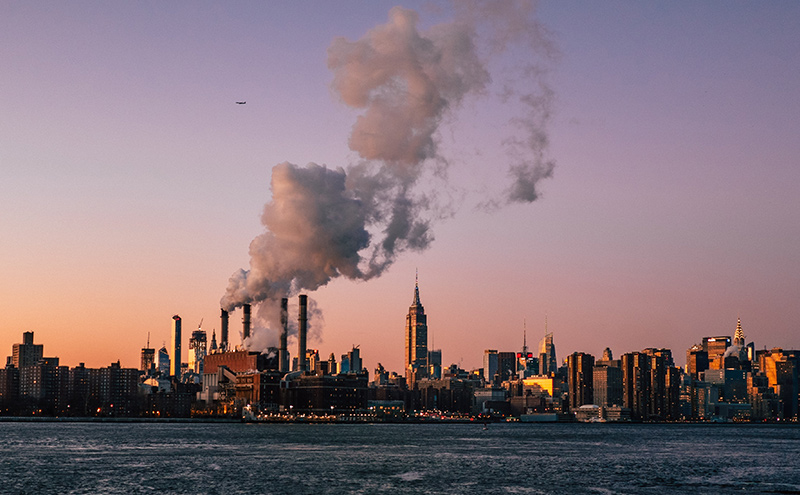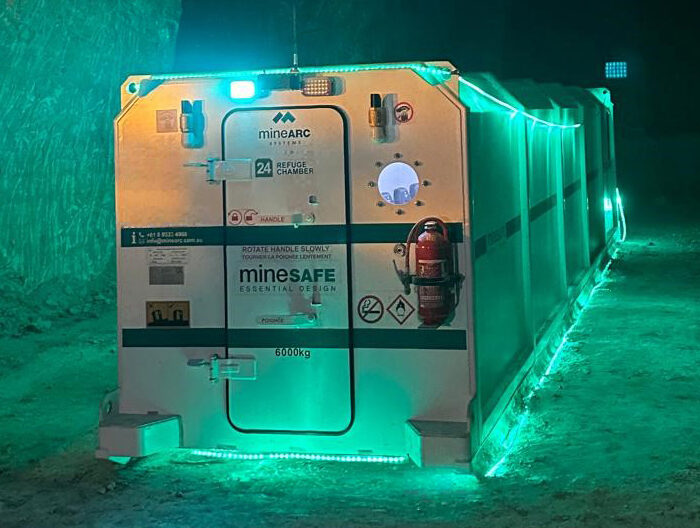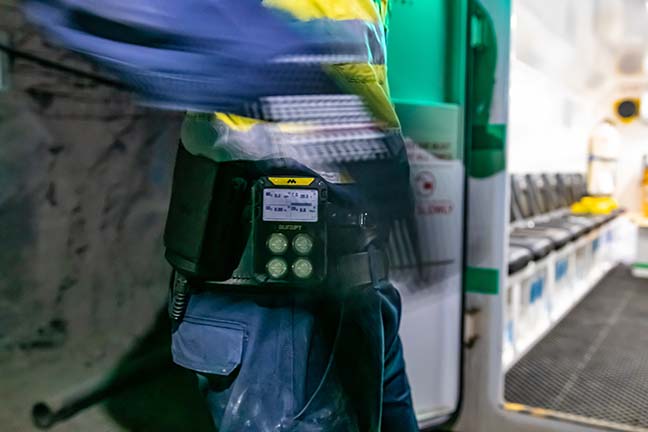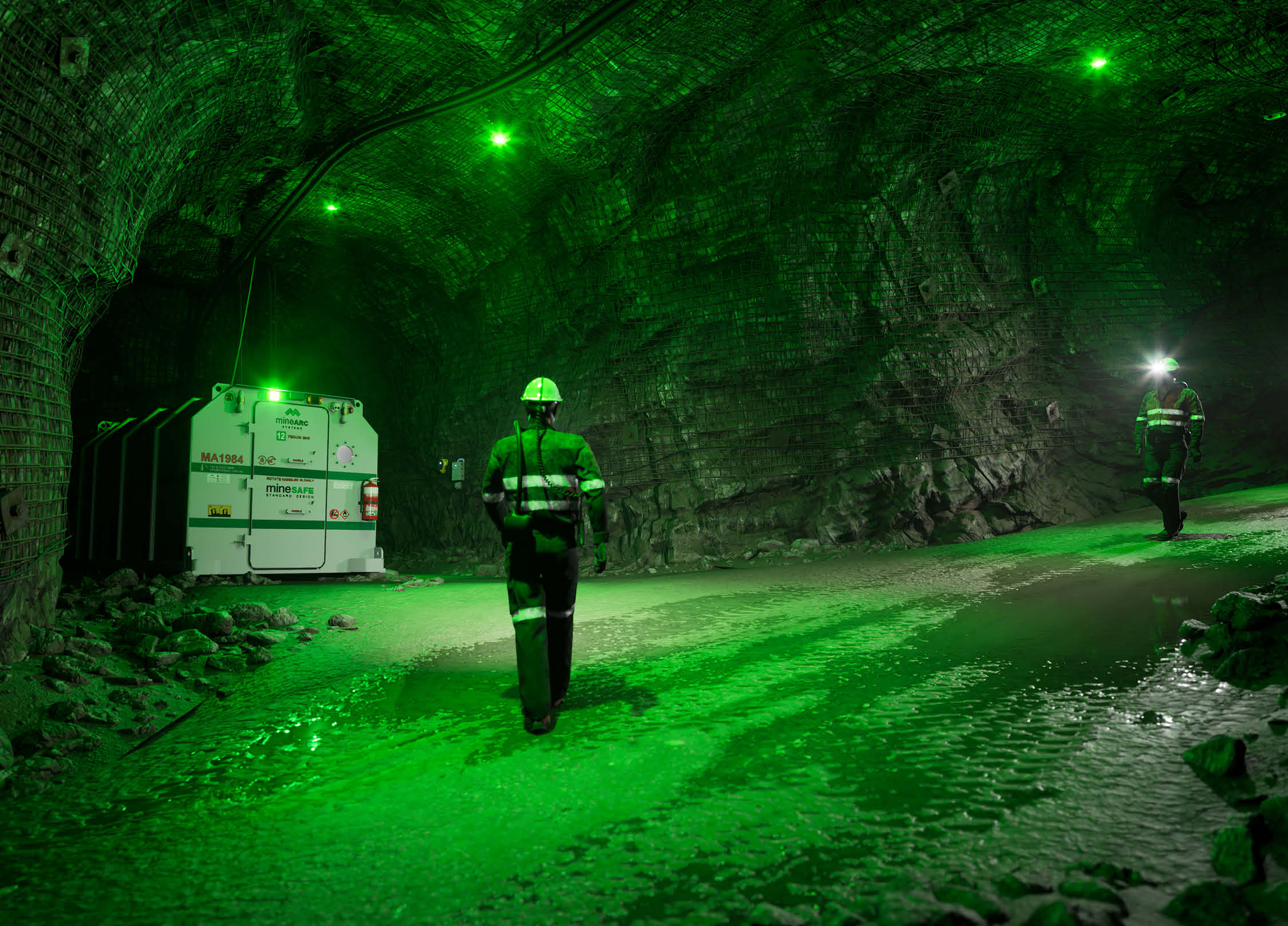Carbon dioxide (CO2) naturally occurs when you exhale. However, when in a sealed structure, such as a refuge station, safe haven or controlled environment, it can quickly build up and cause significant damage to your health. Knowing the health and safety hazards of CO2 is necessary when dealing with refuge chambers and safety protocols.
What is Carbon Dioxide?
CAS Number: 124-38-9
Chemical Compound: CO2
Other names: carbonic anhydride, Dry ice, carbonic acid gas
Chemical Properties
Molecular weight: 144.009 g/mol
Boiling point: -78.48°C
Melting point: -10°C
Vapour pressure: 56.5 atm
Relative gas density: 1.53
Carbon dioxide (CO2) is a colourless and odourless gas existing in Earth’s atmosphere as a trace gas at a concentration of about 400ppm (0.04%) by volume. Natural sources of CO2 include volcanoes and hot springs, and being soluble in water, it occurs naturally in groundwater, rivers, lakes, ice caps, glaciers, and seawater. It is also present in deposits of petroleum and natural gas.
Carbon dioxide is produced by all aerobic organisms when they metabolise carbohydrate and lipids to produce energy by respiration — expelled to the air via the lungs of air-breathing land animals, including humans. It is also produced during the decay of organic materials and by the combustion of wood, carbohydrates and fossil fuels such as coal, peat, petroleum and natural gas.
How Carbon Dioxide is Used
Carbon dioxide occurs naturally in the environment and is a commonly used chemical. Applications of its use range from consumer-related (food and beverage additive, de-caffeinate, or refrigerant), safety (fire extinguisher), manufacturing (pneumatic systems, chemical processing, or production of plastics), oil recovery, and pharmaceutical (as a solvent).
Safety Hazards of Carbon Dioxide
Although carbon dioxide is technically not classified as toxic or harmful, it can be fatal in high concentrations.
Carbon dioxide is not classified as toxic or harmful. However, it is an asphyxiate gas that can reduce or displace the average oxygen concentration in breathing air. The breathing of oxygen-depleted air can lead to death by asphyxiation (suffocation).
In concentrations above 1%, it can cause drowsiness and slight shortness of breath in some people. Levels between 7 and 10% can cause suffocation, even in the presence of sufficient oxygen, exhibited as dizziness, headache, visual and hearing dysfunction and unconsciousness within a few minutes to an hour. The physiological effects of acute carbon dioxide exposure are grouped under the term hypercapnia, a subset of asphyxiation. Occupational exposure levels are 0.5% for eight hours.
Humans exhale CO2 at a rate of approximately 30 Litres per hour. A group of people in a confined, sealed space like a refuge chamber will quickly contaminate the breathable air with CO2 in far less time than it would take to deplete the oxygen.
Exposure Standard Details
| Standard Name | Carbon Dioxide |
| Cas Number | 124-38-9 |
| Time Weighted Average (parts per million) | 5000 |
| Time Weighted Average (mg/m3) | 9000 |
| Short Term Exposure Limit (parts per million) | 30000 |
| Short Term Exposure Limit (mg/m3) | 54000 |
As the gas is fully oxidised, carbon dioxide is non-flammable and does not support combustion. It is often used within some fire extinguishers as a suppressant.
Nevertheless, electrical discharges and extremely high temperatures may decay carbon dioxide into toxic carbon monoxide and flammable oxygen.
CO vs. CO2
Carbon Monoxide and Carbon Dioxide are often mistaken for one another. Because both gases are odourless, colourless, target the cardiovascular system, and enter the body through inhalation, skin or eyes. They also possess similar symptoms if affected, such as headaches, dizziness, seizures, and hallucination.
However, the two gases have very different properties and safety protocols. Below is a summary list of the differences between the two gases.
| Carbon Monoxide | Carbon Dioxide |
| Doesn’t occur naturally in the atmosphere | Occurs in the natural atmosphere |
| Result of oxygen-starved combustion in improperly ventilated fuel-burned equipment | A natural by-product of human and animal respiration, fermentation, chemical reactions, and combustion fossil fuels/woods |
| Generated by any gasoline engine WITHOUT a catalytic converter | Generated by any gasoline engine WITH a catalytic converter |
| A common type of fatal poisoning | Poisoning is rare |
| Flammable gas | Non-flammable gas |
| Symptoms: confusion, nausea, lassitude, syncope, cyanosis, chest pain, abdominal pain | Symptoms: dyspnoea, sweating, increased heart rate, frostbite, convulsion, panic, memory problems |
| Target organ: lungs, blood, central nervous system | Target organ: respiratory system |
| Based on the Occupational Safety & Health Administration (OSHA) standards, the permissible exposure limit (PEL) is 50 parts per million (ppm) | Based on the OSHA standards, the PEL is 5,000 ppm |
| Based on the National Institute for Occupational Safety and Health (NIOSH) standards, the recommended exposure limit (REL) is 35 ppm | Based on the NIOSH standards, the REL is 5,000 ppm |
How to Monitor Carbon Dioxide Levels
Carbon Dioxide can be measured using a non-dispersive infrared (NDIR) sensor. Measurement is based on the physical property that CO2 molecules absorb infrared light or particular wavelengths. By shining light through the target gas and using suitable optical filters, the light detector will give an output that can be converted into a CO2 concentration value.
Numerous gases associated with mining, tunnelling and underground construction are generalised into combustible, toxic and asphyxiate types. Because of the hazardous nature of these gases and the unique and restrictive structure of underground environments, these gases must be continuously monitored to mitigate risk.






